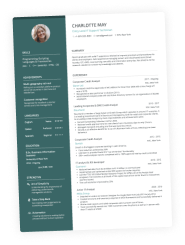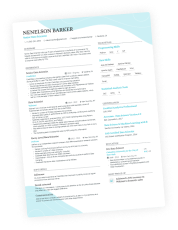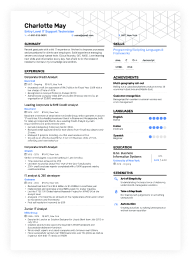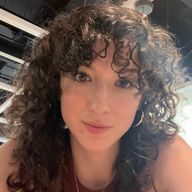Learning doesn’t end once your career begins—and your resume shouldn’t make it seem that way. Mentioning education in progress shows employers you’re growing, staying current, and actively investing in your skills.
Whether you’re finishing a degree, pursuing certification, or taking an online course, it signals initiative and drive. The key is to frame your studies as part of your professional story, not an unfinished chapter.
In this guide, you’ll learn how to list ongoing education on your resume, where to place it, and how to describe it clearly—with examples that fit neatly into any modern resume layout.
Key takeaways
- Include ongoing education if it’s relevant, current, or shows professional growth.
- Use clear phrasing such as “Expected May 2026” or “In Progress”—avoid “Incomplete.”
- Keep formatting consistent with the rest of your resume education section.
- Place education strategically: top for students, below experience for professionals.
- List continuing education, certifications, and online courses separately under Professional Development if needed.
- Be transparent—employers value progress and effort more than perfection.
Just as your education reflects your growth, make sure your resume does too. Use Enhancv’s builder to create a layout that emphasizes your progress and skills.
Is your resume good enough?
Drop your resume here or choose a file. PDF & DOCX only. Max 2MB file size.
Should you include ongoing education (and where it fits)
Yes—if your current studies support your career goals or highlight transferable skills, include them.
Education in progress demonstrates you’re serious about developing expertise, even before you finish. It’s especially useful for students, recent graduates, and professionals shifting into new fields.
Place your studies where they make the most sense in your resume:
- Students or graduates: List education near the top, before experience.
- Experienced professionals: Position it after Work History or in a smaller Education section.
- Short courses or certificates: Group them under Professional Development or Certifications.
A thoughtful layout helps employers understand your progress at a glance and see how your learning connects to your experience. Once you know where your education fits, the next step is showing it clearly and consistently.
How to list ongoing education on your resume
List your studies as you would any other experience—structured and easy to read.
This keeps your education section professional and shows that your learning is active, not unfinished.
Steps to writing a strong ongoing education entry
- Start with your degree or program name: Use the official title of your degree or course.
For example: Bachelor of Science in Marketing - Add your institution and location: Include the university or organization and city.
For example: University of Denver, Denver, CO - Include your start date and mark it as “Expected [Month Year]” or “In Progress”: This gives employers a clear sense of your timeline.
For example: Expected May 2026 - Add key coursework or honors only if they strengthen your application: Choose details that connect directly to the role you want.
For example: Coursework: Consumer Behavior, Marketing Analytics - Keep the layout consistent: Match the style and formatting of your other resume sections for a unified, polished look.
- Focus on what’s most relevant:Highlight achievements, projects, or subjects that demonstrate skills useful in your next role.
Here’s how an ongoing education entry might look on a resume:
Notice how it’s short, clear, and easy to scan—exactly what recruiters want.
How to say ‘currently pursuing a degree’ on a resume
Use straightforward, professional phrasing that shows progress without overexplaining.
- “B.A. in Psychology — Expected May 2026”
- “Currently pursuing a Master’s in Education”
- “MBA, In Progress (Online Program)”
Use “Expected” for professional resumes and “Currently pursuing” for student or early-career ones.
How to quantify your progress
If it adds value, include a brief progress update (with numbers) to display commitment and credibility.
- “Completed 60 of 120 credits toward the degree”
- “Halfway through final-year coursework”
- “GPA: 3.8 / 4.0 (Current)”
Share progress details only when they strengthen your profile—not just to fill space.
PRO TIP
Recruiter insight:
“We don’t expect every degree to be finished—we just want to know where you stand. A simple ‘Expected May 2026’ tells me you’re organized and moving forward.”
A clear, consistent education entry shows attention to detail and confidence in your professional growth.
How to list or describe continuing education
Continuing education includes certifications, online courses, workshops, or professional training. Add these to your resume when they demonstrate growth, upskilling, or specialized knowledge relevant to your next role.
Steps to writing a good continuing education entry
- Use a clear section title: Label it Continuing Education, Professional Development, or Certifications—choose what fits your resume style best.
- Add the course or program name: Include the official title of the course or credential.
For example: Advanced Excel for Business - Include the provider and completion status: Mention the organization and note “In Progress” or “Expected [Month Year].”
For example: Coursera — In Progress - Summarize the focus or result: Add one short phrase about what the course covers or what skill you’re developing.
For example: Ongoing coursework in project management and agile methodology. - Keep it brief: One to three entries are plenty. Focus on what supports your current goals.
Here are two quick examples:
If your resume format includes optional Courses or Certifications sections, that’s the best place for these entries. It keeps your main education section focused on formal degrees.
Common questions about listing ongoing education
If you’re still unsure how these guidelines apply to your situation, you’re not alone.
Here are a few common questions job seekers have about listing ongoing education.
What if I paused my studies or changed majors?
Include them only if they strengthen your story or help explain a career shift. You don’t need to show every start and stop—focus on progress that supports your current goals.
Where should I list certifications or short courses?
If they directly relate to your target job, add them under Professional Development or Certifications. Otherwise, leave them out to keep your resume focused.
Do I need to mention ongoing education in my cover letter?
Yes—briefly connecting your current studies to your career goals adds helpful context. One simple sentence, such as “I’m currently completing my bachelor’s degree in…”, conveys ambition without overexplaining.
Conclusion
Ongoing education is more than a resume detail—it’s proof that you’re curious, adaptable, and continuously improving. When framed the right way, even unfinished studies can strengthen your professional story and show that you’re invested in growth.
When you’re ready to bring everything together, Enhancv’s builder can help you create a cohesive resume and cover letter that show how far you’ve come—and where you’re headed next.
Make one that's truly you.



